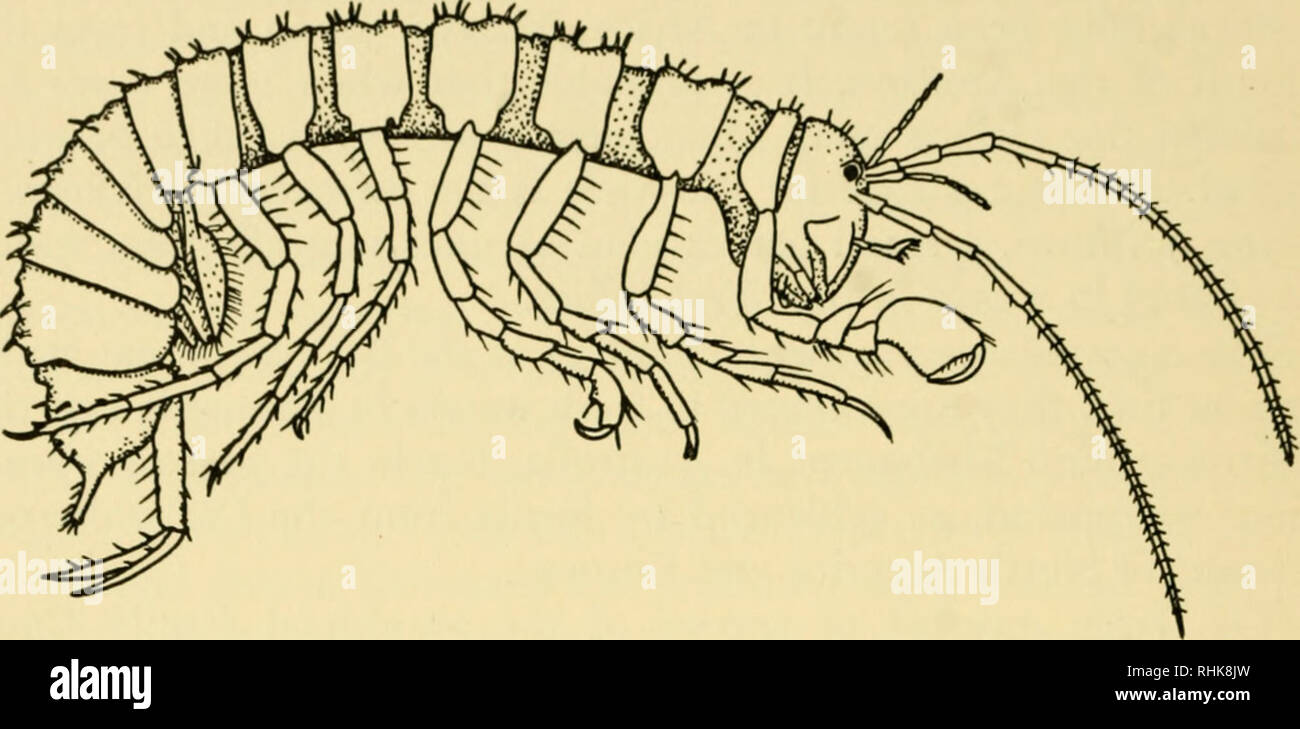. A biology of Crustacea. Crustacea. 144 A BIOLOGY OF CRUSTACEA. Fig. 58. Phreatoicus tasmaniae (Isopoda). A fresh-water form which super- ficially resembles an amphipod. Actual length of body about 2 cm. only a few non-marine species are known, such as Tanais fluviatilis from the Argentine and T. stanfordi in the Kurile Islands. The best known of the fresh-water mysids is undoubtedly Mysis relicta, which is found in various lakes in North America and Europe. Mysis oculata is a close relative which lives in the Arctic Ocean. It is thought that M. relicta has evolved from M. oculata after being

Image details
Contributor:
Library Book Collection / Alamy Stock PhotoImage ID:
RHK8JWFile size:
7.2 MB (246.5 KB Compressed download)Releases:
Model - no | Property - noDo I need a release?Dimensions:
2254 x 1109 px | 38.2 x 18.8 cm | 15 x 7.4 inches | 150dpiMore information:
This image is a public domain image, which means either that copyright has expired in the image or the copyright holder has waived their copyright. Alamy charges you a fee for access to the high resolution copy of the image.
This image could have imperfections as it’s either historical or reportage.
. A biology of Crustacea. Crustacea. 144 A BIOLOGY OF CRUSTACEA. Fig. 58. Phreatoicus tasmaniae (Isopoda). A fresh-water form which super- ficially resembles an amphipod. Actual length of body about 2 cm. only a few non-marine species are known, such as Tanais fluviatilis from the Argentine and T. stanfordi in the Kurile Islands. The best known of the fresh-water mysids is undoubtedly Mysis relicta, which is found in various lakes in North America and Europe. Mysis oculata is a close relative which lives in the Arctic Ocean. It is thought that M. relicta has evolved from M. oculata after being isolated in lakes formed during the Ice Ages. The Arctic origin of the species is confirmed by its preference for cold lakes and its winter breeding habits. Mysis relicta starts laying eggs when the temperature falls below 70 C. and stops again when the tempera- ture rises above this level. Other mysids are known from fresh waters in caves; Troglomysis vjetrenicensis from Herzegovinia, and Spelaeomysis bottazzii from Italy, though the water in which the latter species was found was slightly brackish. There are no fresh-water Euphausiacea, but the Decapoda are quite well represented in fresh water and their distribution is com- paratively well known. Crayfish can be arranged in two families, the Potamobiidae in the Northern Hemisphere and the Parastacidae in the Southern Hemisphere. Both families live mainly in the temperate regions so that there is a vast area of the tropics which lacks crayfish; they are also absent from the whole of Africa, but present in Madagascar. Various genera of crayfish characterise different parts of the world. Among the Parastacidae, Astacopsis and Engaeus are found. Please note that these images are extracted from scanned page images that may have been digitally enhanced for readability - coloration and appearance of these illustrations may not perfectly resemble the original work.. Green, J. (James), 1928-. Chicago, Quadrangle Books